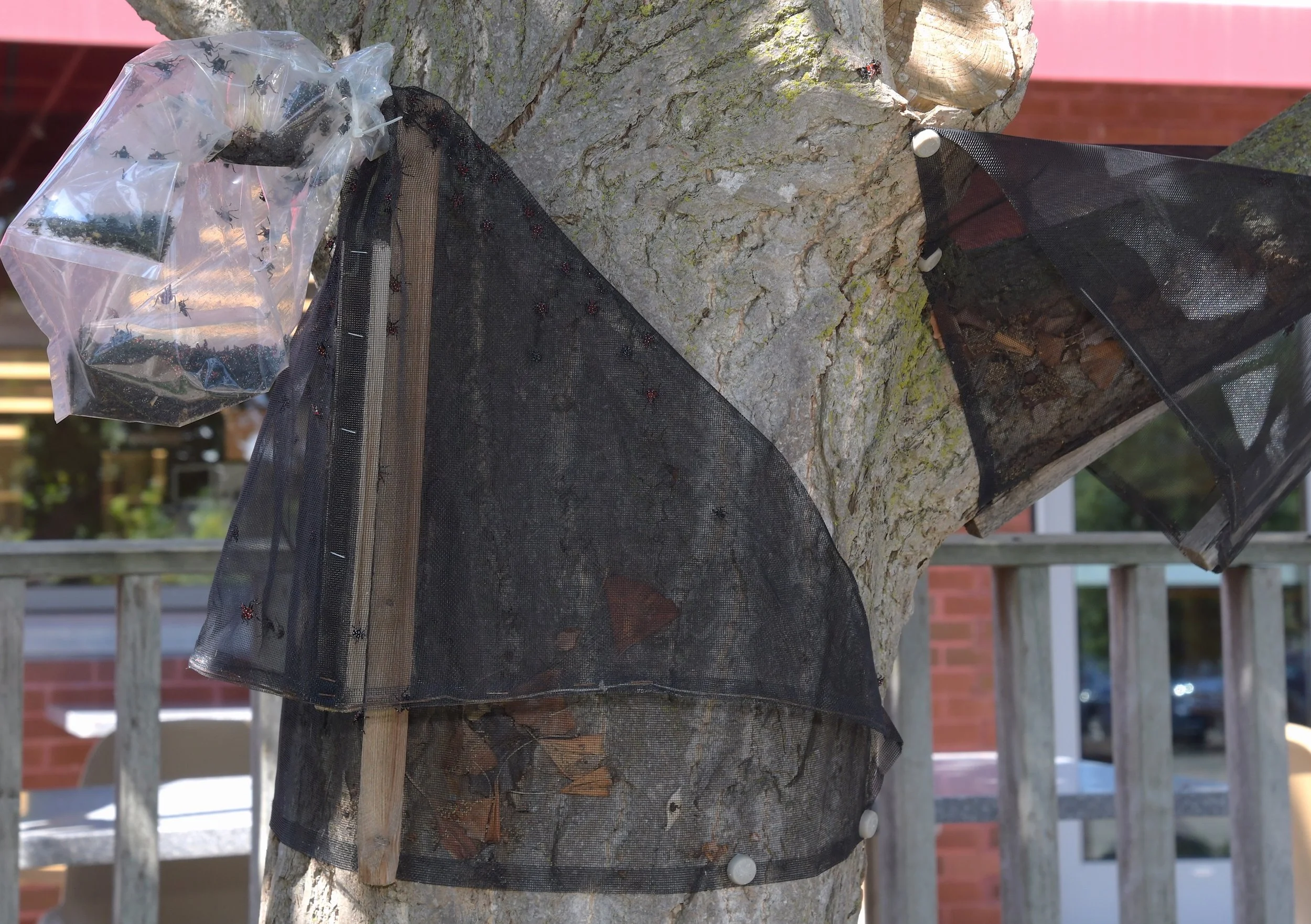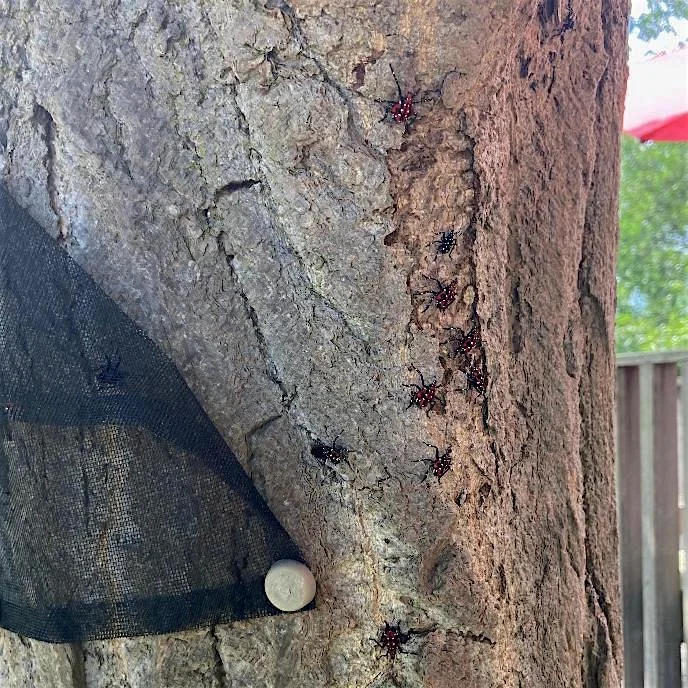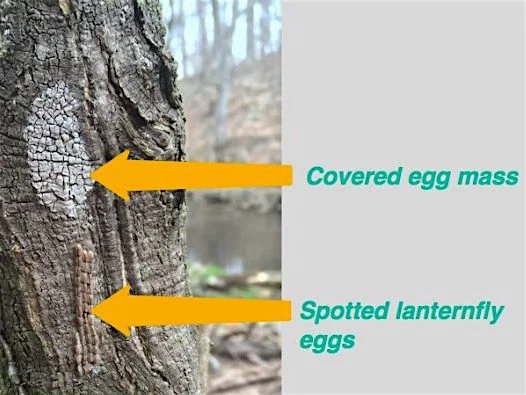This Is What An Invasive Species Looks Like - Spotted Lanternfly
Photos at the Westport Library and Story By J.C. Martin For WestportLocalPress.com
As many Westporters are aware, Fairfield County, Connecticut, is currently facing a growing infestation of Spotted Lanternflies, an invasive insect species known for damaging a wide range of trees and plants.
The Westport Library cafe patio has experienced these annoying pests to a substantial degree, enough to take measures to protect cafe patrons who wish to enjoy the outdoor setting of the patio, as well as to protect one specific tree, a Ginko Biloba as Jesus Torrealba, Westport Library's outstanding Building Maintenance & Facilities Coordinator determined, is apparently a preferred host for these destructive insects. Tasked with dealing with the patio pests, Torrealba has installed the device in the photo above which funnels the bugs into netting where their only destination is a large plastic bag, effectively trapping them inside. Mr. Torrealba used this device, above last year as well to at least make an attempt to mitigate the threat. Mr. Torrealba told WestportLocalPress that the quantity captured in the photo above of the plastic bag is the result of only a few days activity. Torrealba explained that the kit comes with replacement bags which can be swapped out when they become full, and then disposed of. The Riverwalk alongside the Levitt Pavilion is also inundated with the insects according to Mr. Torrealba, who does the walk regularly.
These pests have been observed feeding on economically important crops such as grapes, maples, and fruit trees, raising concerns among local farmers and homeowners. Efforts to control the spread include public awareness campaigns, the use of targeted insecticides, and the removal of the insects’ preferred host plant, Ailanthus, also known as Tree of Heaven This species is a fast-growing, invasive tree native to China. It was introduced to the United States in the late 1700s and has since become widespread, particularly in urban areas. Ailanthus is known for its ability to outcompete native plants, disrupt ecosystems, and damage infrastructure. Despite these measures, the spotted lanternfly continues to pose a significant threat to the region's agricultural health and natural ecosystems.
The above left photo shows the tree at the Westport Library with the insects climbing up toward the traps. The next two show eggs and masses attached to a tree, and removal from the from a post. Those two photos are from Lanternflies.org, an excellent source of information on the issue.
A clear environmental challenge of concern locally, the SLF as it has come to be known has a voracious appetite for plants and trees, posing a significant threat to both the environment and quality of life. This pest feeds on the sap of over 70 plant species using its specialized piercing-sucking mouthparts, showing a strong preference for economically valuable plants such as grapevines, maple trees, black walnut, birch, and willow. The damage caused by their feeding stresses the plants, potentially leading to declining health and even death. If left unchecked, the spotted lanternfly could inflict severe economic harm. A Penn State economic study estimating potential losses of at least $324 million annually in Pennsylvania alone. While Fairfield county has been heavily impacted, widespread infestations are more concentrated in certain areas. The Connecticut Agricultural Experiment Station (CAES) notes that the bug has been detected in all Connecticut counties, but established populations are more prominent in Fairfield and New Haven counties.
A statement from Westport Tree warden Ben Sykas, when queried on the topic and town efforts to combat the threat posed by the pest, read, “As Tree Warden, my primary focus is public safety. Invasive plant species, including Ailanthus, can pose challenges to public infrastructure and local ecosystems. Decisions regarding specific plants or species are context-dependent and based conditions within my jurisdiction. When needed, guidance from the State or Federal resources is utilized.”
Homeowners should be aware of the need for battling this threat to protect their own trees and plant life.
Resources in addition to Lanternflies.org include UConn College of Agriculture, https://cahnr.uconn.edu/ and the CT State Website, Spotted Lanternfly in Connecticut
A simple, low cost method homeowners might want to utilize as opposed to commercial pesticides which many would rather avoid uses Dawn dish washing soap as shown on YouTube:
For those who might want to determine if they have Ailanthus, or Tree of Heaven on their property, visit Nature.org






